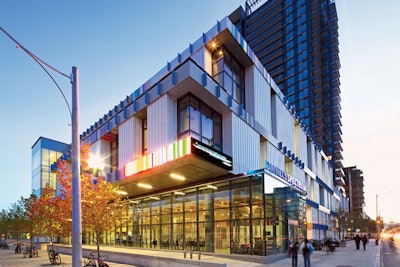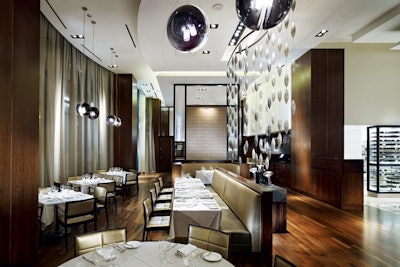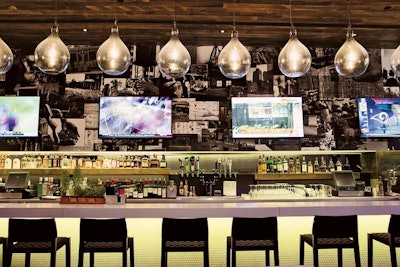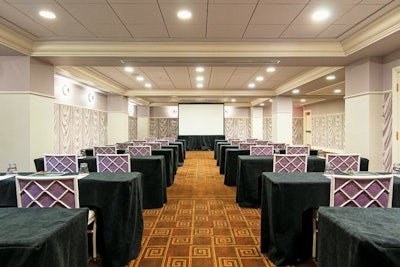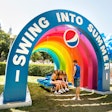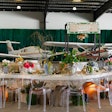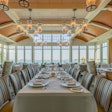Green is good—not just for the environment, but also for venues looking to differentiate themselves in their marketing. As more brands and companies look to align with eco-friendly vendors, different types of sites are garnering attention for their sustainability initiatives.
InterContinental Hotels & Resorts became the first hotel chain to have all its corporate-managed restaurants meet the environmental certification standards of the Green Restaurant Association. The effort, which was achieved in September, is part of the brand’s Green Engage program, an online system established in 2009 that helps properties measure and track their progress toward energy, waste, carbon, and water efficiency.
“We’ve seen a large increase in the corporate responsibility questions that are coming in through requests for proposals,” says Maury Zimring, the company’s director of corporate responsibility and environmental sustainability. “We’ve built a toolkit within Green Engage to help our hotels provide opportunities for meeting planners to decide what best fits their particular event. That was all based on customer demand.”
The brand’s 26 restaurants achieved certification through a variety of initiatives: For example, Michael Jordan’s Chicago Steak House at the InterContinental Chicago Magnificent Mile provides electric vehicle charging stations for guests, while Todd English’s Ça Va Brasserie at the InterContinental New York Times Square diverts 95 percent of its waste from landfills through recycling and composting.
Also in September, the Sands Expo Convention Center in Las Vegas became the first venue to achieve “level two” certification for environmentally sustainable meetings, events, trade shows, and conferences. The certification is a designation of the meeting industry’s comprehensive standards for environmentally sustainable meetings, created through a partnership of the Convention Industry Council’s APEX initiative and A.S.T.M. International.
The venue’s initiatives include reducing energy usage by moving data storage to a cloud-based system, decreasing the number of servers in the building; using Energy Star-rated appliances, efficient water fixtures, and the low-emissions Green Label Plus carpet; installing motion sensors in all back-of-house areas to control lighting; creating a recycling station on the show floor; and offering the only front-of-house composting program in Las Vegas. Planners receive assistance through the venue’s Eco360 Green Meeting Concierge, established in 2011.
The Cincinnati Zoo in Ohio has also embraced a variety of sustainability efforts, and this fall the Green Restaurant Association awarded four stars to the zoo’s Base Camp restaurant, making it one of only 15 restaurants in the nation with that distinction. The African-theme restaurant reopened in May after a $2.5 million renovation. One of the most innovative additions: an aquaponic system that cultivates fish and plants together in a greenhouse. The restaurant uses produce from the system, including tomatoes, cucumbers, bell peppers, and herbs.
“The waste from the fish is used as fertilizer for the plants, who in turn convert potentially toxic chemicals from the water into nitrates, which makes for a healthy environment for the fish,” says Sophia Cifuentes, the zoo’s sustainability coordinator.
Signage around the venue details the zoo’s “Green Food Cycle,” and large bins make it easy for guests to separate their trash for recycling and composting. There’s also a bin designated to collect chip bags and candy wrappers that go to TerraCycle to become products such as wallets, bags, and purses. The restaurant is one of the zoo’s newest event venues, in addition to the Peacock Pavilion, which opened in April.
In Toronto, Daniels Spectrum, an arts and cultural center in Regent Park, opened in September 2012. The building was constructed to LEED Silver certification standards using paint, carpeting, and cabinetry with low levels of toxic chemicals, a heating and cooling system that does not contain hydrofluorocarbons, and low-flow water fixtures. Wood from trees removed from the site during construction has been used in some of the interior decor, such as the counter in the Artscape Lounge. The building’s roof is covered with native plants, providing insulation for the venue and a habitat for wildlife; it also reduces storm-water runoff. In addition to offering space for events, Daniels Spectrum is home to seven nonprofit organizations and offers bicycle-sharing programs and showers for staff who cycle to work.
Many venues are incorporating sustainability into their menus, selection of vendors, and back-of-house practices, like the Chicago restaurant Prasino. Named after the Greek word for “green,” the space opened in August at the city’s Fashion Outlets. Prasino serves breakfast, lunch, and dinner with a focus on locally grown, antibiotic- and hormone-free ingredients purchased from vendors that subscribe to humane treatment of livestock and sustainable practices for their land. The restaurant uses high-efficiency appliances, eco-friendly cleaning products, cloth napkins, and a water filtration system instead of bottled water.
Similarly, Kimpton Hotels & Restaurants has a long history of eco-friendly practices at its properties, including the 268-room Hotel Monaco Philadelphia, which opened in October 2012. For events, Kimpton’s EarthCare program offers glass water pitchers instead of bottled water; printed materials and napkins made from recycled paper; and menus that include organic produce and wine and sustainable seafood.
“Going green wasn’t always as popular as it is today,” says Christine Lawson, Kimpton’s senior vice president of sales and catering. “Now that travelers and companies are more conscious of their impact on the planet, we’ve focused our efforts on both implementing new standards and bringing awareness to the eco-initiatives that have been in place at our hotels and restaurants for decades.”
